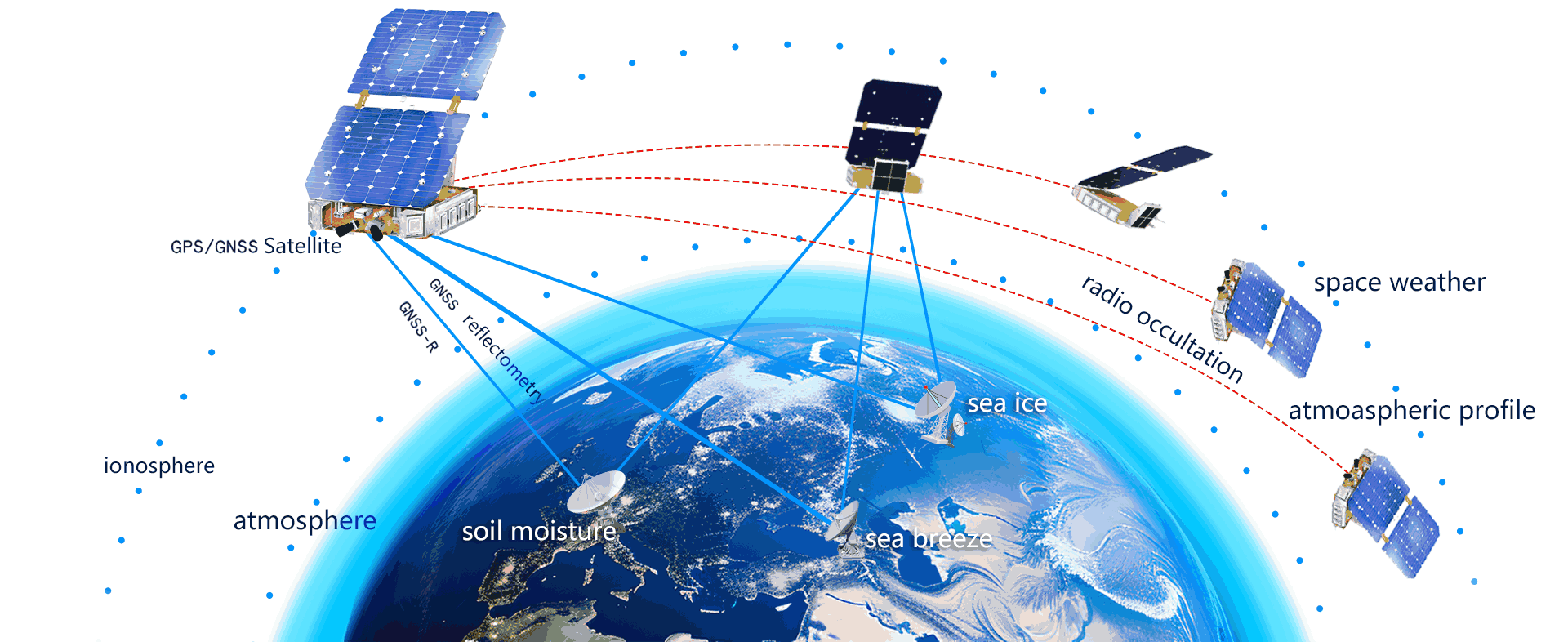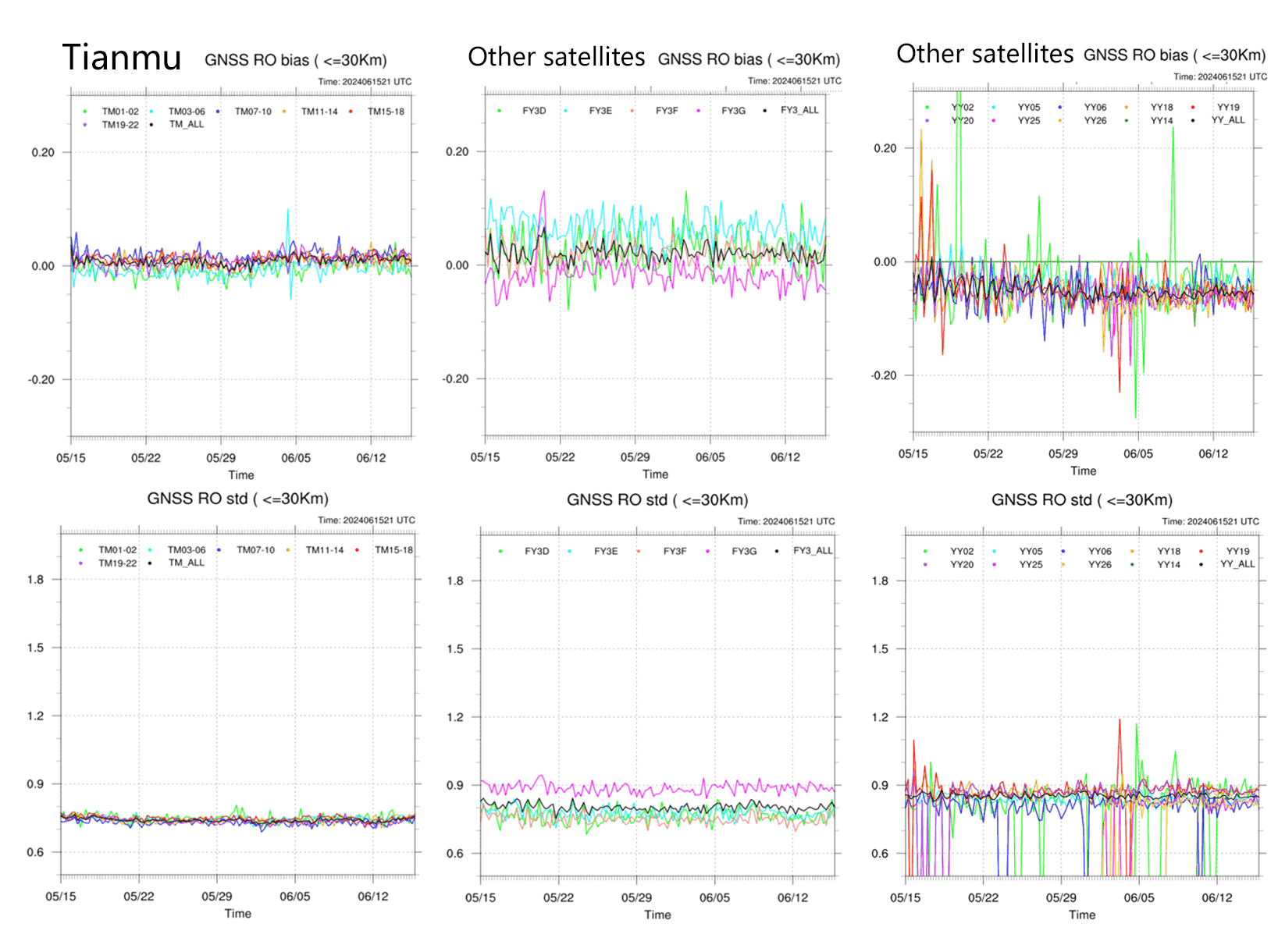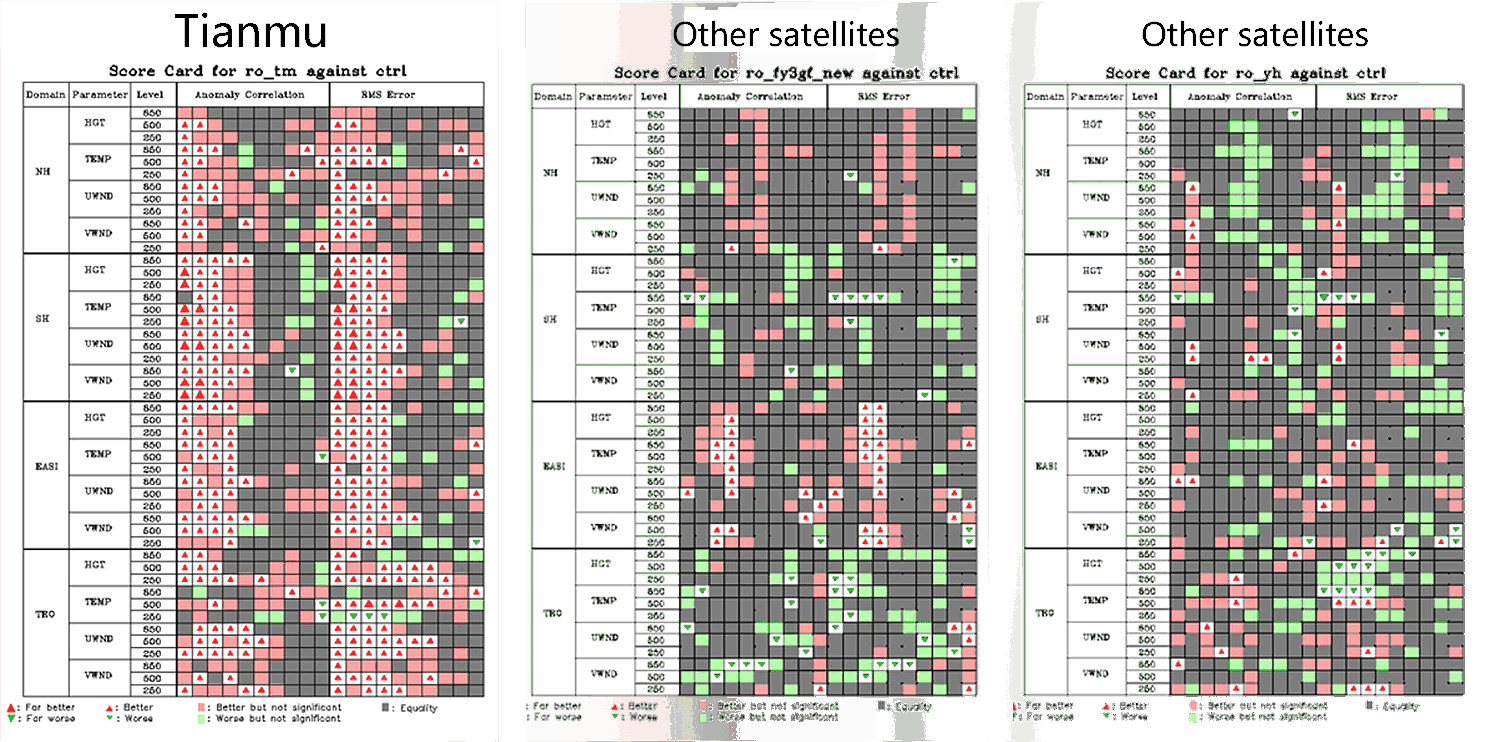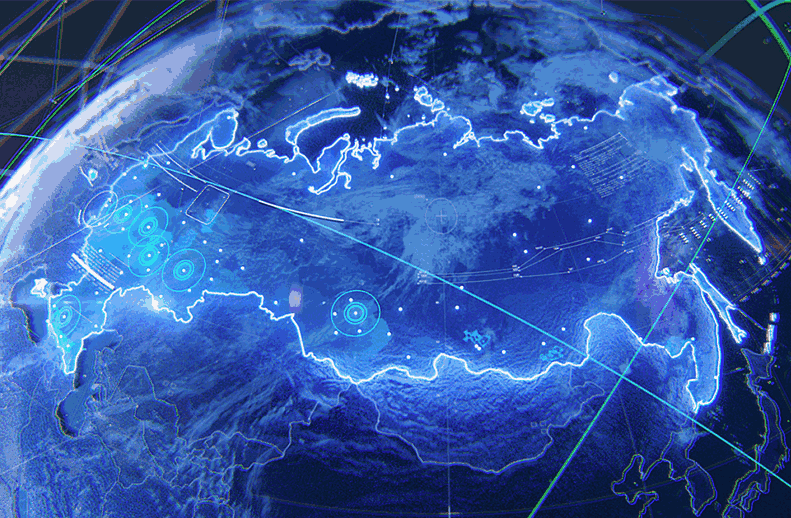Data Acquisition
Tianmu 1 is equipped with "GNSS Occultation Reflection Detector" and "Atmospheric Density Detector", continuously collecting data on land, ocean, atmosphere, and ionosphere 24/7.

Certification of data availability



bias
std

The China Meteorological Administration's assessment indicates that Tianmu occultation data offer higher accuracy, with smaller mean deviation and standard deviation compared to other occultation data.
Accuracy assessment of occultation data




Forecast performance metric card
Legend: Red: Assimilated occultation data improved the forecast. Green: Assimilated occultation data worsened the forecast. Triangle size represents the magnitude of the effect.
Based on the forecast scorecard from the Numerical Prediction Center of the China Meteorological Administration, the assimilation of Tianmu occultation data into the CMA-GFS4.0 system has shown significant positive impacts on forecasts in all regions (Northern Hemisphere, Southern Hemisphere, East Asia, and the tropics), outperforming other occultation data sources.
About data products
Atmospheric Temperature, Humidity, and Pressure Profile
With limb scanning technique, we capture real-time atmospheric bending angles and refractive indices globally. Through inversion processing, it provides high-vertical-resolution, high-accuracy atmospheric profiles of temperature, humidity, and pressure.

Atmospheric Density
The spatial and temporal distribution of atmospheric density at approximately 500 km in a sun-synchronous orbit enables the simultaneous retrieval of atmospheric density at different spatial locations at the same altitude. Level I products include sensor pressure and temperature information, while Level II products provide atmospheric density data at orbital altitude.



